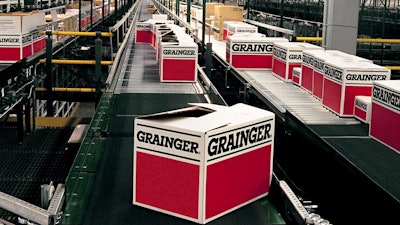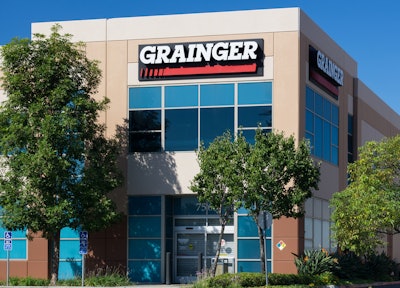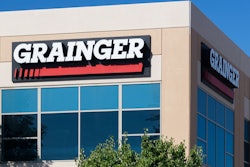
As I noted in a blog earlier this week, on June 7, Grainger hosted a roundtable interview with chief executive officer and chairman D.G. Macpherson and a group of trade publication editors, including myself for Industrial Distribution — in which he candidly fielded numerous questions about a range of topics as they relate to the MRO products distribution giant.
 Macpherson
Macpherson
Amazon Business
While Grainger is the North American MRO products king — No. 1 on Industrial Distribution’s Big 50 List — Amazon Business has been the elephant in the industrial products room ever since it was rebranded and relaunched from AmazonSupply back in 2015. This past March, Amazon Business shared that it had eclipsed $25 billion in annual sales, making that B2B marketplace impossible to ignore for anyone in the B2B products space. However, the company hasn’t publicly shared any details about performance within individual verticals such as MRO. Still, if just 25 percent of Amazon Business’ sales are in industrial products, that’d place it in the top five of our Big 50 List and make it a formidable competitor to Grainger.
June 15 Webinar: "Everything Wrong With the B2B Sales Model, and How to Fix It." Register here!
Asked about how Grainger views Amazon Business, here’s what Macpherson had to say Monday:
“If they’re killing us, there’s no empirical evidence to show it. I feel much more concerned about ‘are we doing the things we need to do to create customer relationships in the B2B space?’ Obviously, Amazon is a force, it’s a wonderful company. Typically what we see from Amazon Business is a focus on office supplies and less of a focus on the (manufacturing) plant. You don’t need that technical knowledge to sell those products.”
 Grainger
Grainger
ID's 2021 Salary Survey is Here! It takes only 5 minutes, and helps us provide our annual report comparing salary and compensation levels across the industry. Get started here.
The Grainger leader highlighted the company’s annual growth rate of 300 to 400 basis points and 5 to 6 percent market share growth, alluding to the fact that it’s enough growth that he doesn’t lose sleep over what’s happening with Amazon Business, while holding it in high regard.
“I view them as a wonderful company and a great competitor and one we take seriously, but we must invest in ourselves,” Macpherson said.
MRO Recovery
 iStock
iStock
I led off Monday’s Q&A session asking Macpherson how he’d rate the current state of the MRO products market recovery in comparison to its late 2019/early 2020 state before the pandemic began impacting businesses.
“We estimate it was down roughly 5 percent in the US during 2020 during the pandemic,” Macpherson said. “We think it’ll be back at 2019 or slightly better this year. There’s plenty of segments that are roaring, but others that are still way down. Overall things are getting back to normal. We’re expecting flat to slight MRO growth compared to 2019.”
In its Q1 earnings report issued back on April 30, Grainger said it was expecting 2021 full-year sales of $12.7 billion to $13.0 billion, which would equate to daily sales growth of between 8.5 to 11.0 percent overall growth from 2020 and organic daily sales growth of 10.0 to 12.5 percent.






















